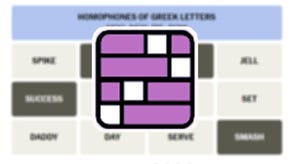Nvidia GeForce RTX 2060 benchmarks: faster than the GTX 1070
Plus it comes with DLSS, RTX and VRS support.
The RTX 2060 is the most affordable RTX card from Nvidia's Turing series, offering better rasterised performance over the previous generation plus support for new technologies like hardware accelerated real-time ray tracing (RT) and deep learning super sampling (DLSS). It's a convincing package, even though the card's launch price of £330/€369/$350 is significantly higher than that of the GTX 1060. In this article, we'll show you exactly how well this card performs in a range of recent games - and how it compares to its closest competition from AMD and Nvidia.
While traditional (ie non ray-traced) performance is of the most interest to our readers, we'll also examine what happens when DLSS is introduced to the mix. This tech serves as an alternative to traditional anti-aliasing, allowing graphics hardware to render scenes at a lower internal resolution and make up the difference with an algorithm trained on extremely high-resolution images of the game in question. That process, made possible by the extra AI capabilities of the RTX architecture, can boost frame-rates substantially in games that support it - and support is growing, slowly.
So which cards are best suited to put the RTX 2060's performance into perspective? First of all, we have included two more RTX cards to give you an idea of how much extra performance you'll unlock by moving up the ladder to the RTX 2070 or RTX 2080. We'll also show you how the RTX 2060 compares to the card that it effectively replaces, the last-generation GTX 1070. (It's worth noting that the RTX 2070 and RTX 2080 cards we tested come with a factory overclock, something you won't find on the Founders Edition of the RTX 2060 or the GTX 1070.) Our final representative will be AMD's penultimate flagship card, the Vega 64, which is in the same general price bracket as the RTX 2060.
To see how the RTX 2060 compares to Nvidia's new GTX 1660 Ti, check out our dedicated article on this topic: RTX 2060 vs GTX 1660 Ti.

| RTX 2080 | RTX 2070 | RTX 2060 | GTX 1070 | Vega 64 | |
|---|---|---|---|---|---|
| GPU cores | 2944 | 2304 | 1920 | 1920 | 4096 |
| Giga Rays/sec | 8 | 6 | 5 | ? | ? |
| RTX-OPS | 60T (57T) | 45T (42T) | 37T | ? | ? |
| VRAM | 8GB GDDR6 | 8GB GDDR6 | 6GB GDDR6 | 8GB GDDR5 | 8GB HBM2 |
| Memory Bus | 256-bit | 256-bit | 192-bit | 256-bit | 2048-bit |
| Mem. Bandwidth | 448GB/s | 448GB/s | 336GB/s | 256GB/s | 439GB/s |
| Base Clock | 1515MHz | 1410MHz | 1365MHz | 1506MHz | 1200MHz |
| Boost Clock | 1800MHz (1710MHz) |
1710MHz (1620MHz) |
1680MHz | 1683MHz | 1536MHz |
| TDP | 225W (215W) | 185W (170W) | 160W | 150W | 295W |
The table above includes the Founders Edition figures, with the reference equivalents in parentheses.
Our new benchmark system was implemented around one year ago, in early 2018, and we're using it once again for the RTX cards. The idea is that instead of using static graphs or burned-in video data, we're combining the two into a dynamic system. Press play on the test scene for each game, and you'll see live telemetry for frame-times and frame-rates that gives you a better idea of performance than a simple average frame-rate figure. You can add or remove different cards or resolutions with the controls to the right of the video, with up to four data sources being shown simultaneously. If you're in a rush, you can also find average frame-rate figures in a barchart below. Here, you can also mouse over the chart to see how each card did at the best or worst moments of the benchmark, which can tell a different stories than the averages alone. You can also click on the chart to change between frame-rate values and percentages, which can make it easier to compare two results without the need for mental maths. Now, let's get into the results!
Assassin's Creed Odyssey
We begin with one of the biggest hits of last year, Assassin's Creed Odyssey. The sweeping vistas of this game are accurately represented in the benchmark, giving even modern cards a challenge at the ultra high preset we've selected. The RTX 2060 is just a few frames shy of a 60fps average, showing a 16 per cent advantage over the GTX 1070. That gap widens as we go up the resolution ladder, with the new RTX card providing a 23 per cent higher average frame-rate at 1440p. The Vega 64 isn't a dab hand in this engine, showing among the lowest scores of the group.
AC Odyssey: Ultra High, TAA
Assassin's Creed Unity
Unity, the 2014 Assassin's Creed release, shows a similar trend for the RTX 2060 over the GTX 1070. There's a 12 per cent gap at 1080p, a 13 per cent gap at 1440p and a 14 per cent gap at 4K. The 95fps shown by the RTX 2060 at 1080p is enough to make some use of a high refresh rate monitor, particularly if you opted for a lower preset than ultra high. The Vega 64 shows the greatest variance in this test, with extremely high scores in some scenes and very low scores when the depth-of-field effect is applied.
Assassin's Creed Unity: Ultra High, FXAA
Battlefield 1
Battlefield 1 is our next test. This DirectX 12 title isn't too demanding even on its highest preset, allowing mid-range and better cards to deliver high frame-rates at lower resolutions and reasonable results at 4K too. The RTX 2060 shows a massive lead over the GTX 1070 in Battlefield 1 at 1080p, at 140fps compared to 110fps - a gap of 22 per cent. The RTX 2060 sits about five per cent behind the RTX 2070 and 20 per cent behind the RTX 2080 at the same resolution. However, at 1440p and 4K, we see a greater difference between the RTX trio, with the RTX 2060 to RTX 2080 gap widening to 28 per cent at 4K. The Vega 64 performs much better here, outperforming the RTX 2060 and usually coming close to the RTX 2070 as well.
Battlefield 1: Ultra, TAA
Crysis 3
Despite being released six years ago, Crysis 3 remains a challenging game for the latest graphics cards - and particularly the explosive pass we look at here from the game's singleplayer campaign. The RTX 2060 is about 10 per cent faster than the GTX 1070 at all three resolutions, while the Vega 64 provides nearly exactly the same frame-rates as the mid-range RTX card. The gap between the RTX 2060 and RTX 2080 is also significant, at around 30 per cent for each resolution we tested.
Crysis 3: Very High, SMAA T2X
Far Cry 5
Once again, we see a 10 to 14 per cent difference between the frame-rates of the RTX 2060 and GTX 1070 in this relaxing benchmark taken from the 2018 Far Cry release. There's a similar gap between the RTX 2060 and RTX 2070, which the latter card unsurprisingly scoring higher. The Vega 64 scores highly here as well, beating out the RTX 2060 at each resolution and coming darn close to the RTX 2070 at 4K.
Far Cry 5: Ultra, TAA
Ghost Recon Wildlands
Ghost Recon Wildlands is a 2017 release, but it remains the most challenging benchmark in our collection when using its ultra preset and temporal anti-aliasing. The RTX 2060 is again about 12 per cent ahead of the GTX 1070, showing that its raw compute power does make up for its lower RAM count even in this challenging title. The Vega 64 becomes more competitive at higher resolutions, starting out worse than the RTX 2060 at 1080p - perhaps due to higher driver overhead that's better seen in more CPU-bound scenarios - but becoming four per cent better at 4K.
Ghost Recon Wildlands: Ultra, TAA
Rise of the Tomb Raider
Rise of the Tomb Raider is a poor simulation, being easier to run than the actual game, but its three scene workload is still valuable for comparing graphics hardware performance. The RTX 2060 is 12 to 14 per cent ahead of the GTX 1070 here once again. Interestingly, the RTX 2070 and RTX 2080 can flex their muscles better at higher resolutions, with the gap between the RTX 2060 and RTX 2070 widening from 11 per cent to 15 per cent when moving from 1080p to 4K.
Rise of the Tomb Raider: Very High, SMAA
Shadow of the Tomb Raider
Shadow of the Tomb Raider is the 2018 release of the Lara Croft franchise. The game didn't get quite as strong reviews as the second game in the modern remake series, but it does provide a more realistic - and more challenging! - integrated benchmark. The more recent engine seems to include a few optimisations supported by the RTX hardware, as the RTX 2060 moves out to a 17 per cent lead over the GTX 1070. However, the Vega 64 performs very well here, offering about 9 per cent better performance at 4K.
Shadow of the Tomb Raider: Highest, TAA
The Witcher 3
If you've got a 1080p 144Hz monitor to use with your RTX 2060, The Witcher 3 is a great game choice. You can expect 116fps at this resolution, as long as your processor can keep up - we're using an overclocked Core i7-8700K pinned to 4.7GHz. That's about 13 per cent faster than the GTX 1070, a gap that remains nearly constant at every resolution we tested. The bigger RTX cards do show comparatively better performance at higher resolutions, with the RTX 2070 going from 14 per cent better than the RTX 2060 at 1080p to 18 per cent better at 4K.
Witcher 3: Ultra, Post-AA, No Hairworks
Wolfenstein 2: The New Colossus
Our final title is Wolfestein 2: The New Colossus, where BJ takes a flammenwerfer-equipped Panzerhund for a late-night stroll through New Orleans. The RTX 2060 performs extremely well here, with scores 20 per cent higher than the GTX 1070 at 1080p and 1440p. This game also supports the 20-series Variable Rate Shading (VRS) feature, which can add another 15 per cent performance to the RTX 2060 at its most aggressive setting. Note: due to incompatibilities between this game and our video capture software, Vega performance numbers aren't available.
Wolfenstein 2 Vulkan: Uber, TSSAA 8X
DLSS vs TAA: Final Fantasy 15
We conclude with a look at DLSS, to see how this technology can boost performance in supported games. The Final Fantasy 15 benchmark isn't the best-designed piece of testing software in the world, but it does show pretty effectively how DLSS compares to traditional TAA at 4K resolution. The RTX 2060 jumps from 23fps average to 32fps, a jump of nearly 40 per cent that's in line with that of more expensive RTX cards. DLSS support will soon arrive in other titles too, like Battlefield 5, and could become this card's secret weapon against its Nvidia 10-series and AMD competitors.
Final Fantasy 15 Demo: TAA vs DLSS
With game performance summarised and our short look at DLSS concluded, that's the end of the article. For more details on the first mainstream RTX card, check out our full RTX 2060 review or our RTX 2060 video review on YouTube.









